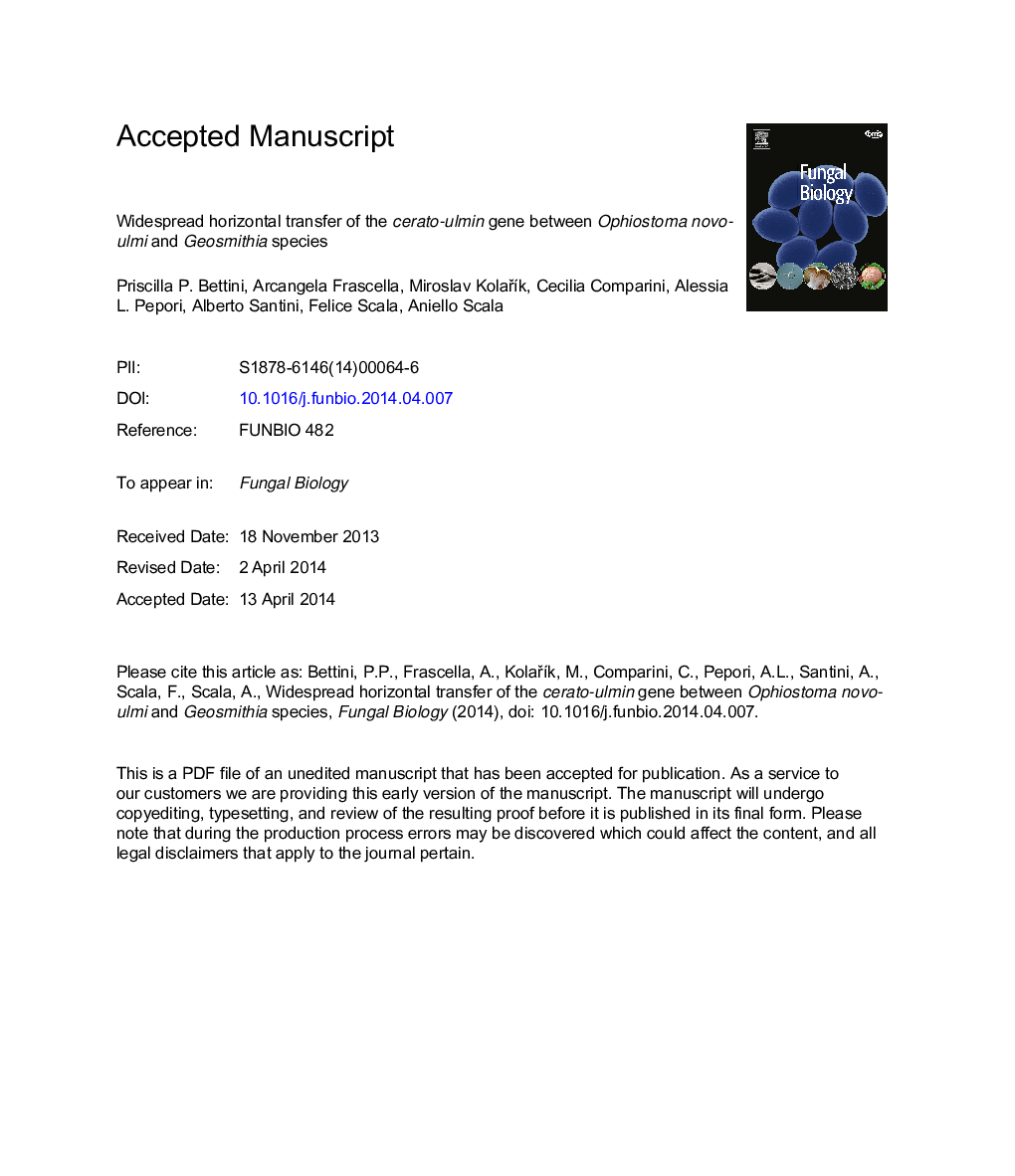| Article ID | Journal | Published Year | Pages | File Type |
|---|---|---|---|---|
| 6287872 | Fungal Biology | 2014 | 43 Pages |
Abstract
Previous work had shown that a sequence homologous to the gene encoding class II hydrophobin cerato-ulmin from the fungus Ophiostoma novo-ulmi, the causal agent of Dutch Elm Disease (DED), was present in a strain of the unrelated species Geosmithia species 5 (Ascomycota: Hypocreales) isolated from Ulmus minor affected by DED. As both fungi occupy the same habitat, even if different ecological niches, the occurrence of horizontal gene transfer was proposed. In the present work we have analysed for the presence of the cerato-ulmin gene 70 Geosmithia strains representing 29 species, isolated from different host plants and geographic locations. The gene was found in 52.1Â % of the strains derived from elm trees, while none of those isolated from nonelms possessed it. The expression of the gene in Geosmithia was also assessed by real time PCR in different growth conditions (liquid culture, solid culture, elm sawdust, dual culture with O. novo-ulmi), and was found to be extremely low in all conditions tested. On the basis of these results we propose that the cerato-ulmin gene is not functional in Geosmithia, but can be considered instead a marker of more extensive transfers of genetic material as shown in other fungi.
Related Topics
Life Sciences
Agricultural and Biological Sciences
Agricultural and Biological Sciences (General)
Authors
Priscilla P. Bettini, Arcangela Frascella, Miroslav KolaÅÃk, Cecilia Comparini, Alessia L. Pepori, Alberto Santini, Felice Scala, Aniello Scala,
